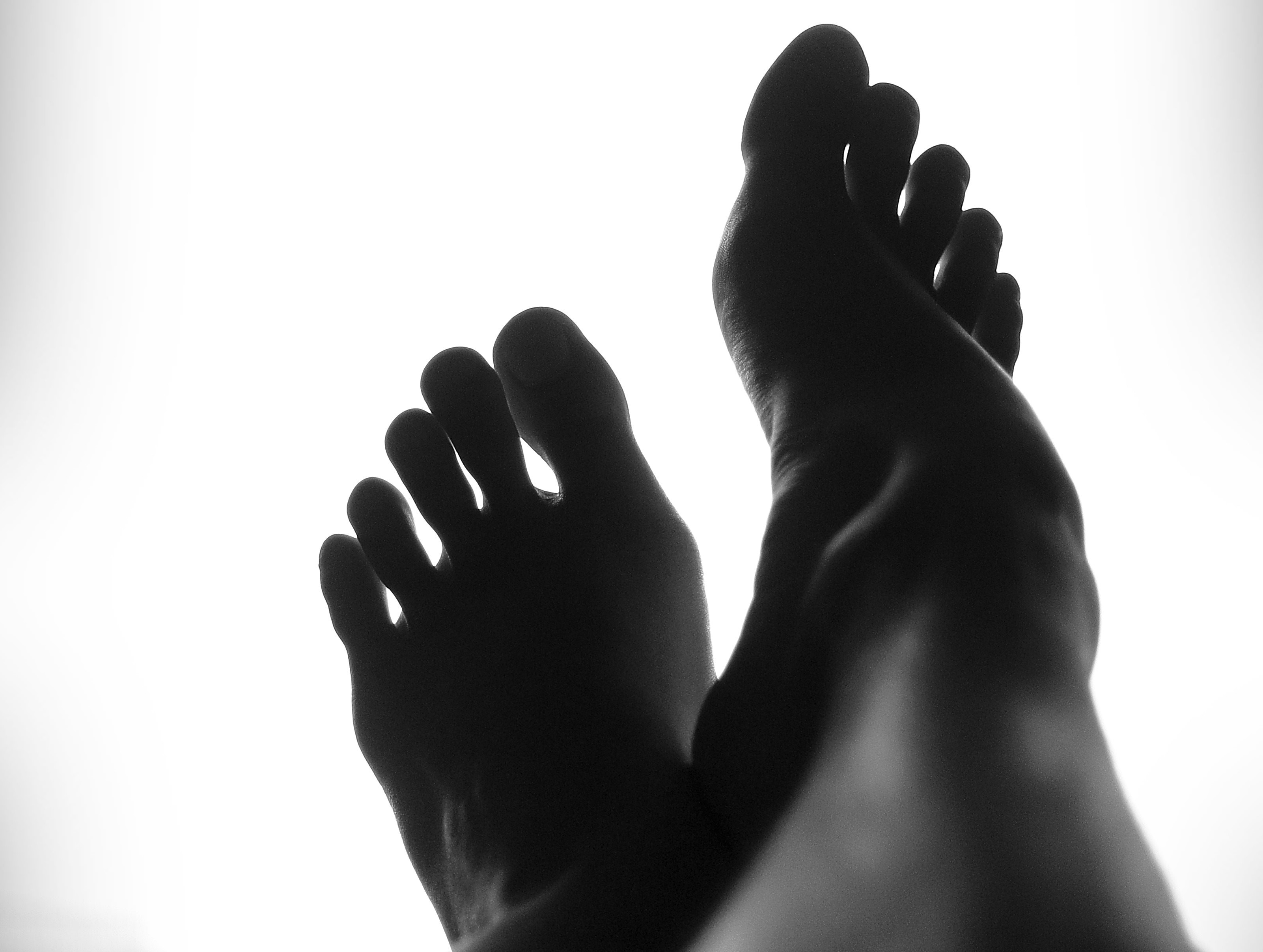
Diabetes complications can affect the entire body, from head to toe. Diabetic foot is a catch-all term for complications and infections that can affect the feet.
Why does diabetes cause foot problems?
Diabetes causes a few things to happen in the body that makes it more likely a foot might get injured or infected.
Neuropathy or nerve damage lessens your ability to feel pain, hot or cold in the foot. If you have small cuts or blisters, you may not notice them or seek treatment for them right away.
Damaged blood vessels and poor blood circulation makes it harder for oxygen and nutrients to reach the legs and feet. This slows down healing and makes the feet prone to infection.
In this way, even small wounds or cuts on the feet can end up seriously infected without proper care. Gangrene and amputation can follow soon after. About 85% of foot amputations are caused by complications from a diabetic foot ulcer.
It’s therefore very important for a diabetes patient to take care of their feet and make sure even small injuries are not allowed to become worse.
How should I care for my feet?
Early prevention and action is key to avoid diabetic foot. Check your feet daily to ensure you catch injuries or changes early and can seek fast medical treatment.
Remember to check the top, sole, and sides of each foot. Use a magnifying glass or magnifying hand mirror to make it easier to inspect your soles. You should also see your doctor regularly for foot exams.
What should I look out for?
When you inspect your feet, take note of:
- injuries – cuts, sores or blisters
- broken skin – cracking, peeling or dry skin
- redness or swelling
- nail problems – discoloration, peeling, chipping or ingrown nails.
- any changes to the shape of your foot – fallen arches, bent toes etc.
- pain, tingling or numbness
- changes in temperature (very warm or cold feet)
- corns or calluses
If you notice any problems, or your injuries do not begin to heal within 1 day, see your doctor immediately.
What else can I do at home?
- Keep your feet clean, warm and dry. Wash them gently in lukewarm water, then pat them dry. Do not use hot water. If your feet tend to get cold, wear socks, and change them daily. There are socks made specifically for diabetes patients that have extra cushioning and help funnel moisture away from the skin. If you have sweaty feet, consider using an antiperspirant on your soles.
- Moisturise your feet. Apply a thin layer of moisturiser on your feet to keep dry skin from cracking and peeling. Do not moisturise between your toes, as this can encourage foot fungus.
- Trim your nails carefully and regularly. Cut straight across and file the edges.
- Do not go barefoot. You might step on something and injure your foot. Wear slippers, even around the house. Choose shoes that do not pinch, rub or restrict your feet. Shoes should be made out of breathable materials like leather, canvas or suede.
- Keep blood flowing to your feet. Raise your feet while sitting. Wiggle your toes and point your feet up and down for 5 minutes, 2-3 times a day. Don’t stand in one position or cross your legs for long periods of time. Stay active.
- Keep your diabetes well-managed. Monitor and control your blood sugar levels, eat a healthy diet, and see your doctor regularly.
- Do not smoke. Smoking further restricts blood flow in your feet.
Conclusion
Diabetic foot can be a serious complication of diabetes. Left uncontrolled, it can lead to infection and amputation of the foot or legs. But with careful daily prevention, you can avoid the suffering of diabetic foot, stay healthy and stand on your own two feet for a long time ahead.
References
American College of Foot and Ankle Surgeons (ACFAS) (2016) Diabetes Foot Care Guidelines [Accessed: 3 June 2019] Available at: https://www.foothealthfacts.org/conditions/diabetic-foot-care-guidelines
American Diabetes Association (2014) Foot Care [Accessed: 3 June 2019] Available at: http://www.diabetes.org/living-with-diabetes/complications/foot-complications/foot-care.html
Syamala A. (2017) Diabetic Foot Ulcer: TCC Demand Growing in Malaysia [Accessed: 3 June 2019] Available at: https://acubiz.com.my/diabetic-foot-ulcer-tcc-demand-growing-malaysia/
Daniel J.T. MD, PhD (2018) Foot Care When You Have Diabetic Peripheral Neuropathy [Accessed: 3 June 2019] Available at: https://www.endocrineweb.com/guides/diabetic-neuropathy/foot-care-when-you-have-diabetic-peripheral-neuropathy
David K. M., MD (2019) Patient education: Foot care in diabetes mellitus (Beyond the Basics) [Accessed: 3 June 2019] Available at: https://www.uptodate.com/contents/foot-care-in-diabetes-mellitus-beyond-the-basics
Ann P. (2016) Diabetes Foot Care [Accessed: 3 June 2019] Available at: https://www.healthline.com/health/diabetes-foot-care#healthy-foot-habits
WebMD (2014) Tips on Good Foot Care [Accessed: 3 June 2019] Available at: https://www.webmd.com/diabetes/diabetic-foot-care-tips